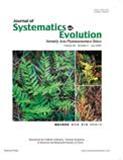Xing LIU, Hong LIU, Qing-Feng WANG
Micromorphological characters of mega- and microspores of five Isoëtes species from China were observed under scanning electron microscope (SEM). Megaspores of I. hypsophila have a levigate ornamentation, and are 358 µm in diameter (mean, n=30), microspores of this species have a gyrus ornamentation, and are 22 µm in length (mean, n=30); megaspores of I. yunguiensis have a cristate-reticulate ornamentation, with a size of 390 µm in diameter (mean, n=30), while microspores nearly smooth with some fine granulates, and with a size of 22 µm in length (mean, n=30); megaspores of I. taiwanensis are tuberculate and 312 µm in diameter (mean, n=30), echinate microspores are 24 µm in length (mean, n=30); cristate megaspores of I. sinensis are 409 µm in diameter (mean, n=30), and echinate microspores are 28 µm in length (mean, n=30); megaspores of I. orientalis have a cristate-reticulate ornamentation, with diameter of 420 µm (mean, n=30), microspores of this species have an echinate-tuberculate ornamentation with a size of 34 µm in length (mean, n=30). Based on the morphological characters of spores and chromosome numbers among taxa, it was found that mean spore size in each species of Isoëtes generally reflected the ploidy level. I. hypsophila, I. yunguiensis and I. taiwanensis, with smaller mean spore size, are diploidy with 2n=22; I. sinensis (2n=44) and I. orientalis (2n=66), with larger mean spore size, are polyploidy. The spore morphology of Isoëtes still plays an important role in identification and classification of Isoëtes from China.

